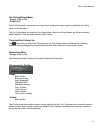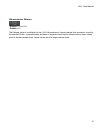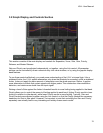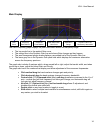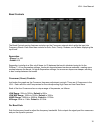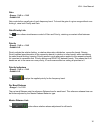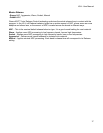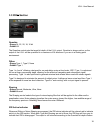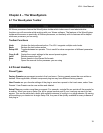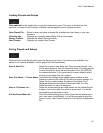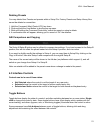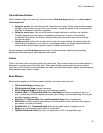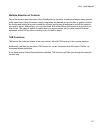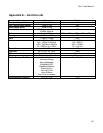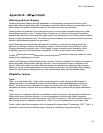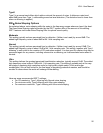L3-LL User Manual
26
Type2
inimal the amount of noise. It delivers a noise level
me low level distortion. (The distortion level is lower than
ifting.
Hz sampling rate.
he
ype1
t may be
rocessed again for any reason, including consecutive re-dithering, as its accumulated noise effect is
ltra
ery
some recommended IDR™ settings:
Type 2 is a narrow-band dither which adds a m
about 5dB lower than Type 1, while adding so
when no dithering is applied.)
IDR™ Noise Shaping Options
As explained above, noise shaping shifts the noise to the frequency ranges where we hear it the least.
he three Noise Shaping options provided by the IDR™ system differ in the amount of this sh
T
IDR™ features ninth-order Noise Shaping filter for optimal sound quality.
Moderate
This setting typically reduces perceived hiss (or distortion, if dither is not used) by around 6dB. The
added high frequency noise is about 9dB at 44.1 k
Normal
This setting typically reduces perceived hiss (or distortion, if dither is not used) by around 12dB. T
added high frequency noise is about 15dB at 44.1 kHz sampling rate. This setting, together with T
dithering, is well suited to the creation of CD production masters. It is also good for masters tha
p
minimal.
U
This setting delivers the greatest perceived hiss/distortion reduction, typically around 18dB. The added
high frequency noise is about 23dB at 44.1 kHz sampling rate. This setting is suitable only at the v
last stage of mastering high resolution audio for high-quality digital media (16-bit and longer
wordlengths). Ultra is best suited for the final stage of preparing production masters, and should be
avoided in cases where the audio will undergo further editing.
Here are
• For CD-mastering, Type 1 dithering with Normal noise shaping
• For minimum noise, Type2 dithering with Ultra noise shaping
• For maximum resolution, Type1 dithering with Ultra noise shaping



